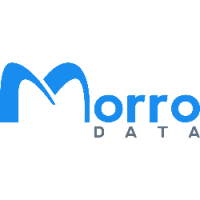4 Ways Cloud NAS Can Save You and Your Company Time
4 Ways Cloud NAS Can Save You and Your Company Time
Like most positions in growing small to medium-sized businesses, the IT team’s duties can quickly expand to include new tasks and responsibilities. As part of the IT team, that could mean installing new software to keep up with business growth and answering a lot of questions from users. Rethinking a traditional Network Attached Storage (NAS) could be one way to simplify your company’s storage and free up precious time for your tech department.
NAS and Cloud NAS
A traditional NAS, as its name indicates, is attached to your network. That means there’s an in-house server that stores the shared data. Most, if not all, NAS configurations have disk drives in a RAID array that can prevent data loss in the event of a single disk failure. Users on the same network can access the shared NAS at the local LAN speed.
A Cloud NAS operates differently. Instead of a server housed on the premises, the user will access the locally cached files of the cloud data. With ever faster Internet speeds, users at remote sites can access the latest version of a file within seconds of another user saving it. Because of the benefits of a cloud-centric design, switching to Cloud NAS can save time in numerous ways.
1. A Lot Less Hardware
IT may never be able to go completely cable-less, but a Cloud NAS offers a significant reduction in hardware servicing. With file servers now taking place in a cloud environment, there’s no need to maintain those in-house servers anymore. That means there’s no chance of a disk failure, and no more out-of-capacity to take care of.
2. Better File Protection
NAS data needs to be backed up to either a cloud, disk, or tape for an external archive to prevent data loss during fire, theft, or other disasters. Cloud NAS already keeps its master data safely in the cloud; only copies of recently accessed files are kept in the cache of the on-premises gateway.
While traditional NAS keeps only the last version of a file, Cloud NAS saves multiple file versions in the cloud. This means that in the event of ransomware or human errors, Cloud NAS users can restore files and folders by reverting to versions at a previous point in time. This file versioning integration would save time for the IT team by minimizing and eliminating backups. That means no more full or incremental backup files needed to restore when the servers are needed most.
3. No Additional Training
Compared to other cloud storage solutions, Cloud NAS doesn’t require users to learn a new interface or workflow, saving them valuable time. Users continue to use Windows File Explorer or macOS Finder to access the network shares. The beauty of Cloud NAS is retaining the same NAS interface while the functionality is now global. Users across multiple sites share files as if everyone were accessing the same physical server. And all of this is done through the Internet without the hassle of a VPN.
4. No More VPN Support Tickets
In today’s hybrid workplace, VPN access is near the top of the list of IT support topics. Cloud NAS is designed to bring data to the user, rather than the other way around. By minimizing data latency, Cloud NAS enables users with data-intensive workflows such as video editing and architecture design to attain higher productivity. Bringing data to the users also means that users can more easily take advantage of the latest desktop technologies such as multiple HD monitors when working with data.
Time to Save Time
Along with the simplicity and functionality of a Cloud NAS system, comes time saved that could be better used elsewhere. IT teams have a never-ending to-do list already; migrating to a Cloud NAS can help cut down that list.
Migrating to a Cloud NAS means less hardware maintenance, better file protection, no additional training, and a lot less troubleshooting. The great migration from traditional NAS to Cloud NAS is just a matter of time. Learn more about Morro Data’s Cloud NAS solutions today.
